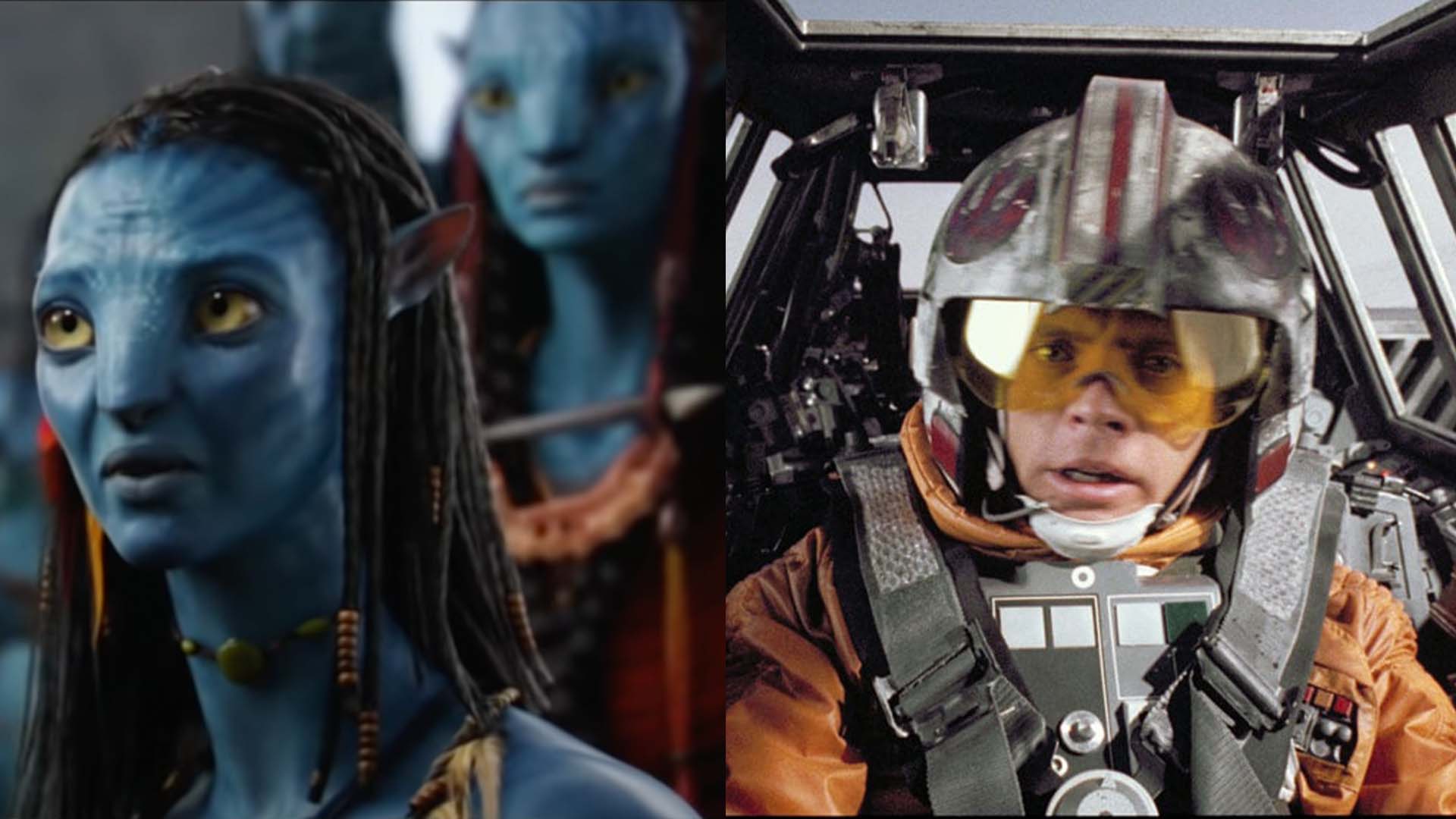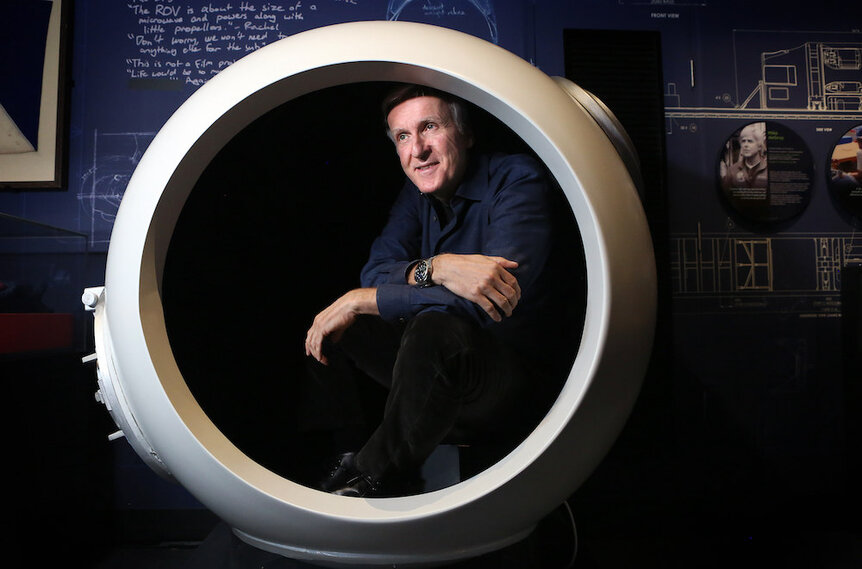Create a free profile to get unlimited access to exclusive videos, sweepstakes, and more!
James Cameron breaks down the big difference between the Avatar and Star Wars universes
Pandora is far-removed from the galaxy far, far away.

Not all sci-fi universes are created the same. Recently taking part in a press roundtable (SYFY WIRE was one of the select outlets invited onto the Zoom call) to discuss his new book — Tech Noir — Oscar-winning filmmaker James Cameron broke down the main difference between the epic genre worlds of Avatar and Star Wars. (It should be noted that both properties were, once upon a time, owned by 20th Century Fox; now, they're both the intellectual property of Disney.)
"If you look at the George Lucas universe, there’s the desert planet and the jungle planet and the high-tech city planet and every sort of planet," Cameron explained before joking: "There was like the Italian Lakes District planet, apparently. But I just figured that’s not how complex worlds work. That’s not how Earth works."
And so, Pandora, the home-world of the Na'vi, was born out of that desire to craft a planet that feels as diverse and relatable as our own. In addition, it provided the writer-director with a broad "canvas" (this specific term was brought up twice during the roundtable) on which to flesh out the science fiction themes and concepts he's been exploring for nearly four decades.
"We have all these different biomes and environments right here on Earth, so [I wanted] to celebrate the nature we know by making Pandora a very rich and complex world," he continued. "There was nothing I felt I needed to say dramatically or thematically that I couldn’t do in the Avatar universe. And just continuing to expand that and give it depth and dimension and take it down avenues that people are not for sure expecting. That’ll be the fun and to tell an epic story on that kind of scale…I can’t guarantee as I’m sitting here that I’m gonna get to do that."
It's been over a decade since Avatar first hit the big screen, becoming the highest-grossing movie in box office history and kicking off a short-lived phenomenon of RealD 3D movies. Since that time, Cameron has been hard at work on four sequels that are slated to be released by Disney's 20th Century Studios between 2022 and 2028. However, the director seemed to cast a small shadow of doubt over whether we'll get to see all the films (at this juncture, the first two follow-ups are complete).
"If Avatar 2 does well, and if we finish 3 and 3 does well, we go on to 4, but it’s all written out," he said. "The way I imagine it is, I’ve got this series of novels that we’ve bought. We have the IP and we can continue to make movies from them ... Of course, I’m enamored of the people that I work with. I’ve got some of the world’s best design artists working with me, the best creature designers, and I just love to see what they create when I create a provocation by giving them sometimes a sentence or a paragraph and see what they come back with. It’s a great process."
The director's fascination with science fiction stems from his childhood love of classic pulp stories, which are just as famous for their text as they are for their eye-popping artwork of horrifying beasts, shrieking damsels in distress, and sleek rocket ships sitting upon the dark and cratered surface of some alien world. Hollywood projects made in the pre-Moon landing era featured similar depictions of human space travel, which felt antiquated to Cameron by the time he was starting to make movies himself. This is evident in Xenogenesis, a 1978 short film made with Randall Frakes that definitely carries hints of the stylistic choices Cameron would go on to make in his blockbuster efforts.
"I studied physics and astronomy in college and I kind of appreciated how difficult it would be and how a lot of spacecraft designs in movies were pretty whimsical," he said. "So I came up with this idea for a starship that had the engine section far away because of the radiation and so on. I could just go down that nerdy rabbit hole of figuring out the tech, and I think I’ve maintained that as a motif throughout my science fiction body of work ... We had all these movies that showed rocket ships and they were all pointy and they had fins at the bottom. That’s how they landed and went to other planets, and when we finally went to the Moon, we went to the most improbable-looking device that was never anticipated by a couple of decades of Hollywood designers."
Cameron continued: "But if you understand why it was the way it was, it makes completely logical engineering sense. So I thought, in my science fiction films, I’m gonna start with the engineering and let that drive the design, and then that’s what we’ll build, and that’s the world we’ll inhabit. So while I’m not really preceding with Xenogenesis, the way in which I formulated my working process is still what I apply today."
When asked if he'd ever return to the world of Xenogenesis in some way, shape, or form, Cameron said he'd recently read the script and found that its story pretty much held up, even after all these years. "There’s actually some good ideas in it," he admitted. "It’s fairly well-trodden ground now 40 years later, so nothing that other people haven’t done in pieces, I don’t think. I don’t think it’s that worthy a project, but you could see that I was fascinated by space travel and especially the sort of huge physical challenge in the physical world of traveling to other star systems."
At the end of the day, though, the very construct of genre still grants you a license to have a little bit of fun and not strictly adhere to the natural order of things. "I give myself a lot of permission in Avatar and I just remind people, ‘Hey, it’s a world with floating mountains. We can give ourselves permission to do some improbable things,'" Cameron added, going on to explain how floating mountains are still theoretically feasible, according to known scientific principles.
"Even there, I had a rationale for the floating mountains," he concluded. "That unobtanium was a Type-2 superconductor and the Meissner Effect flux-pinning would hold them up off the ground if there was a magnetic field of sufficient force etc. etc. So we had it all sort of worked out, but for the average viewer, it’s a world with floating mountains. If that doesn’t give you permission to do anything you want, I don’t know what does."
Tech Noir: The Art of James Cameron is now on sale from Insight Editions for $75.



























